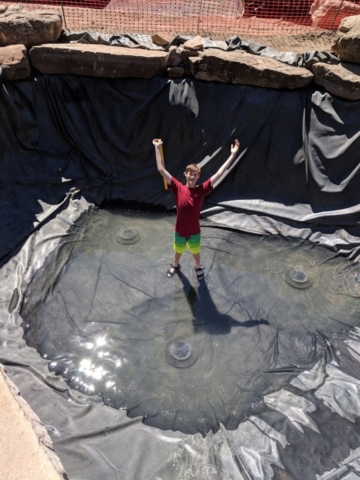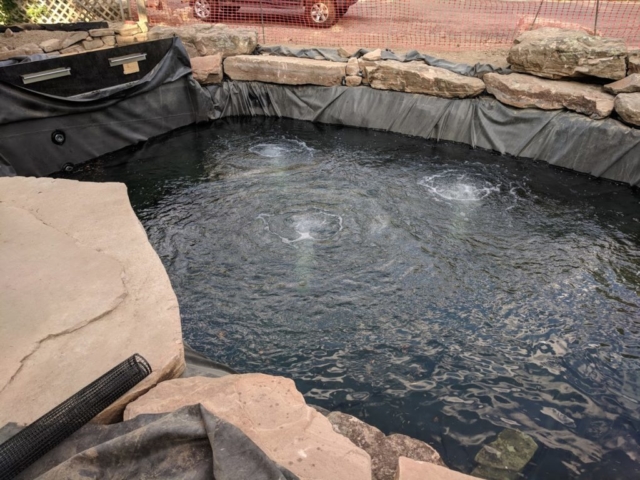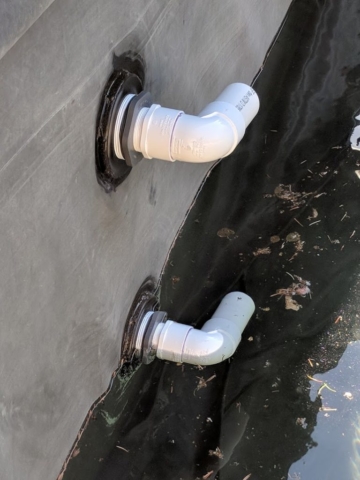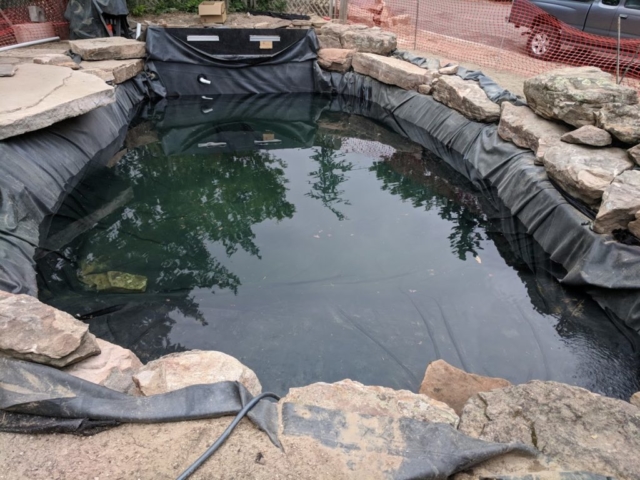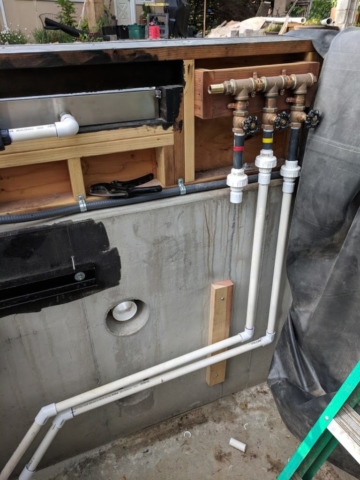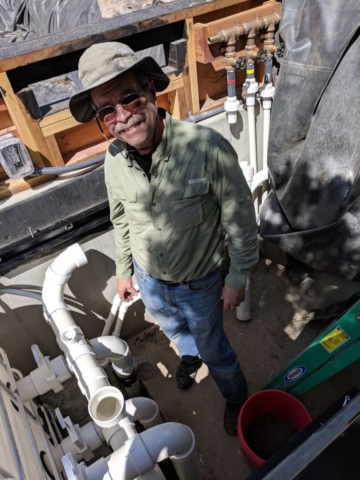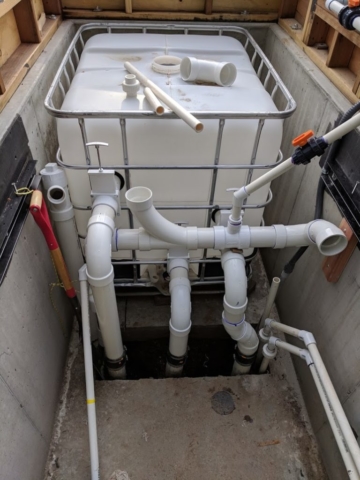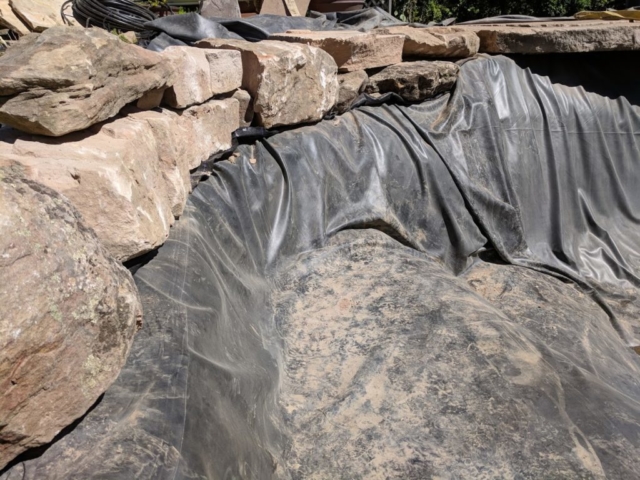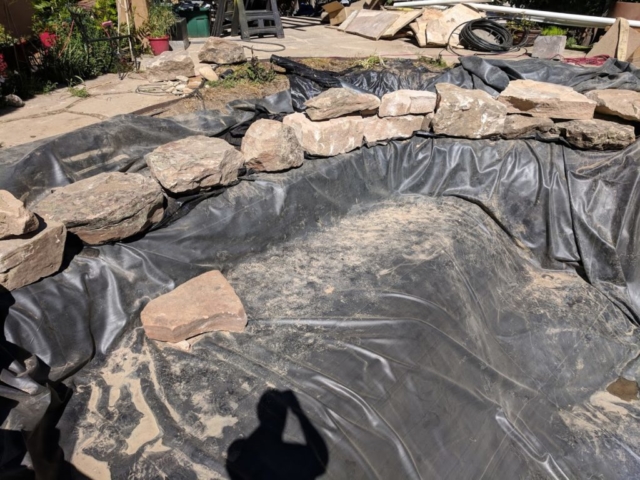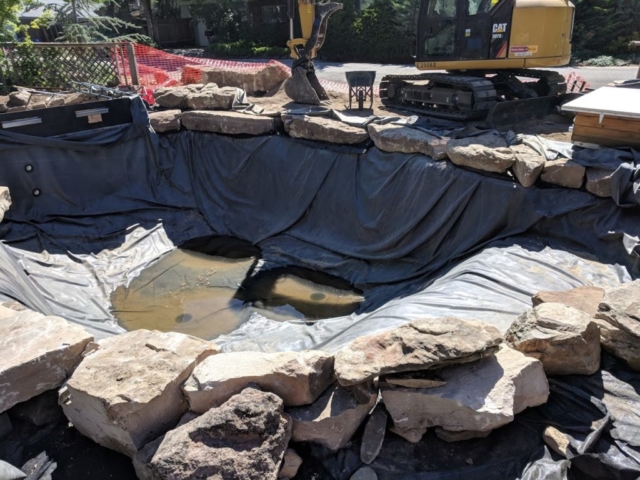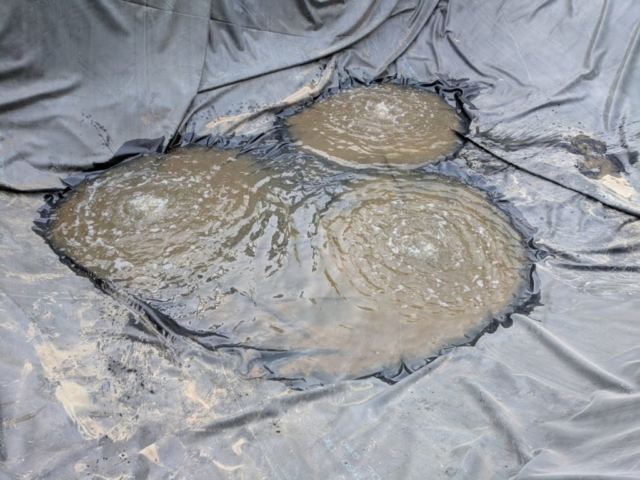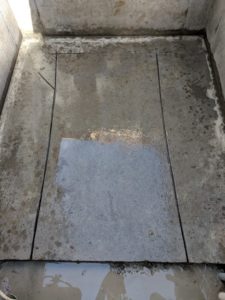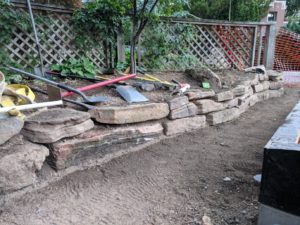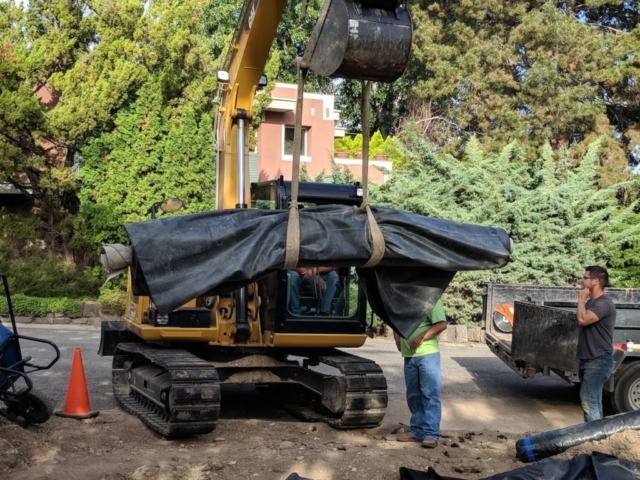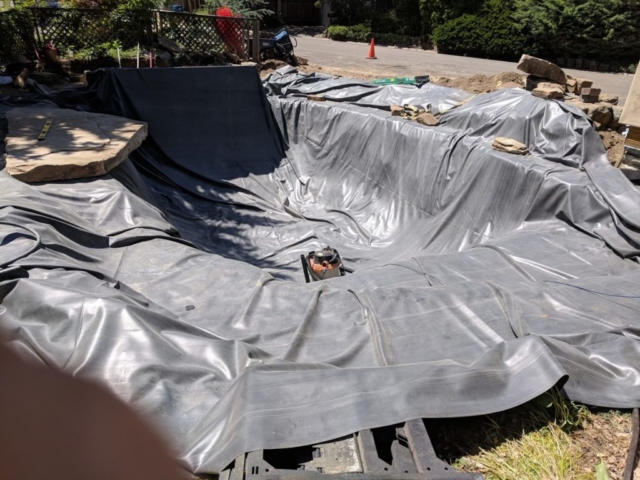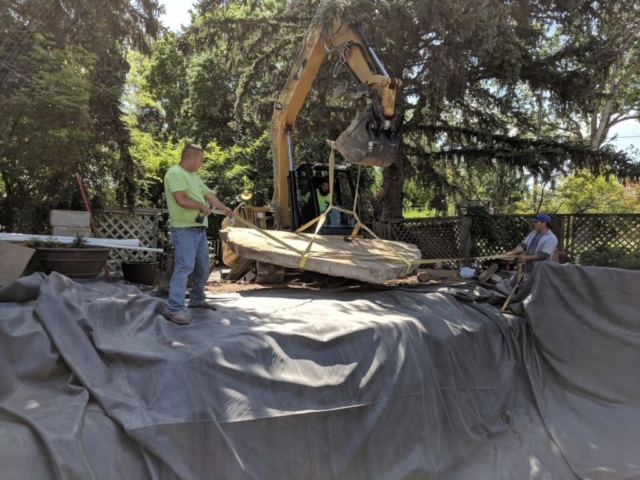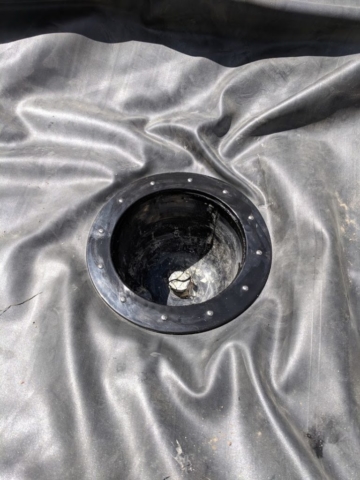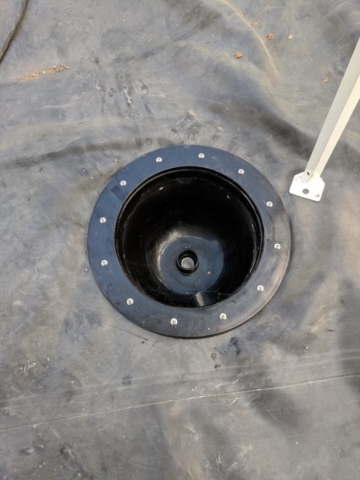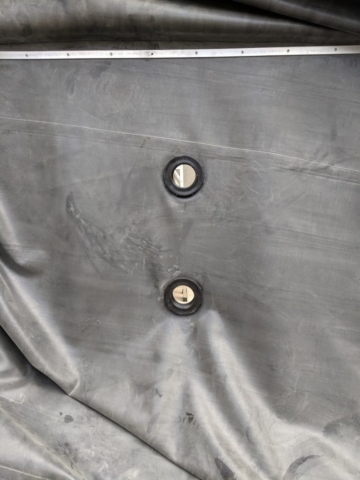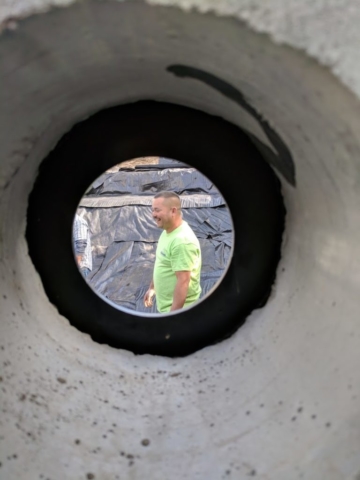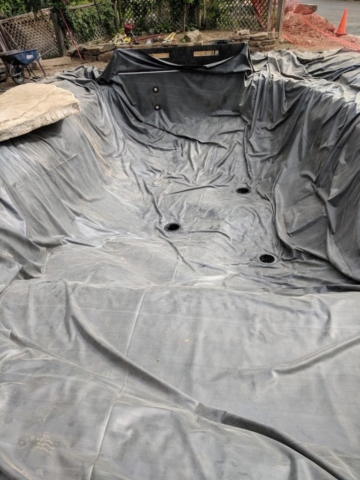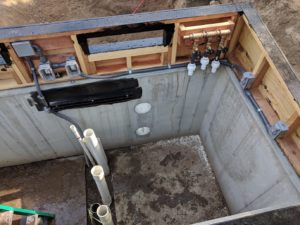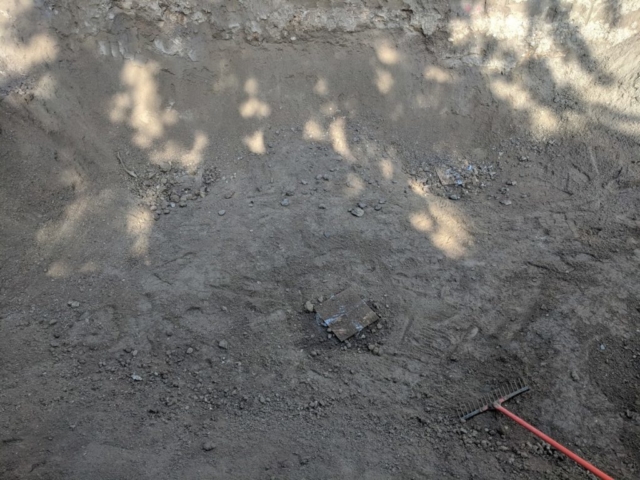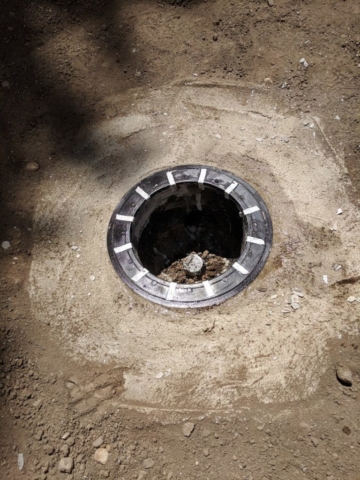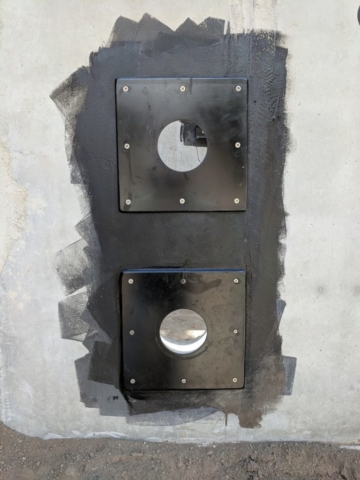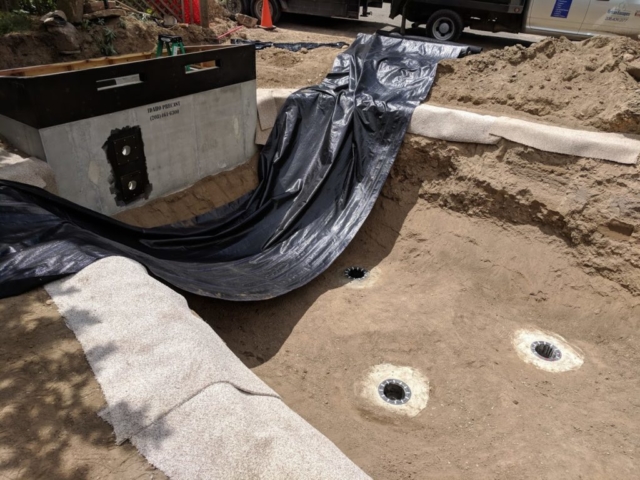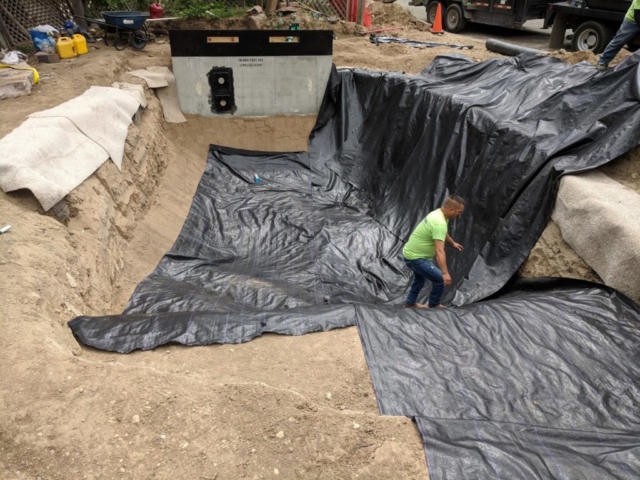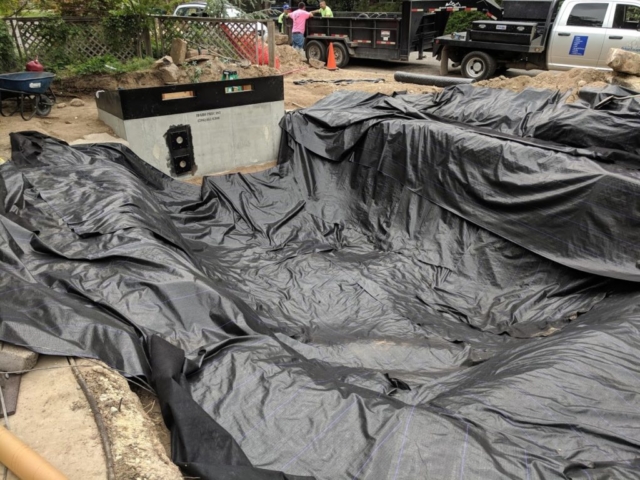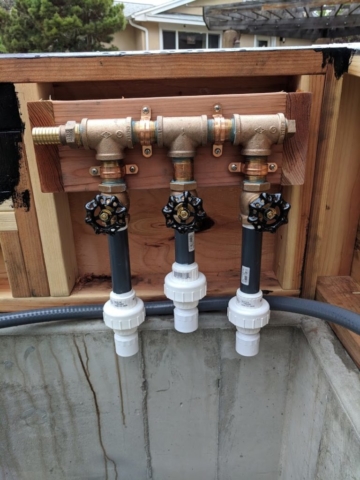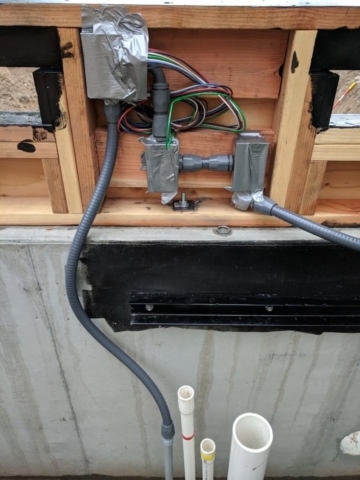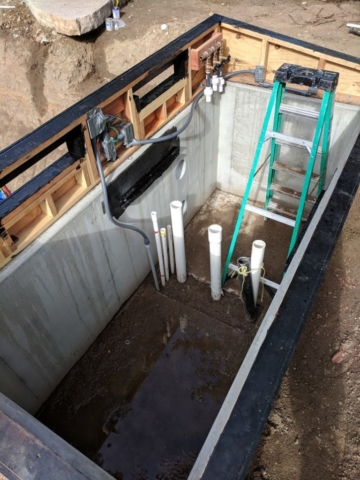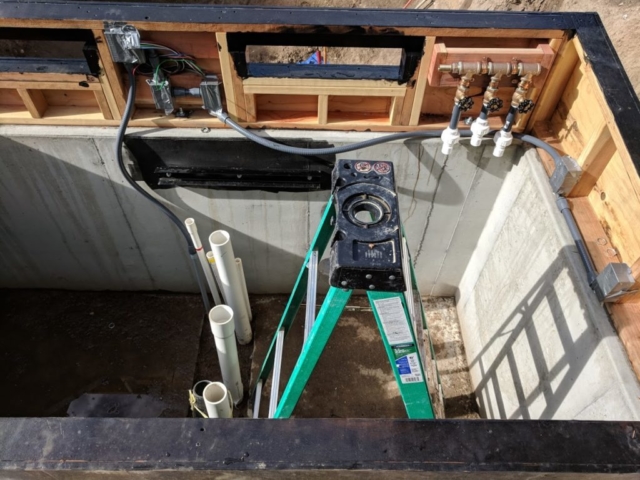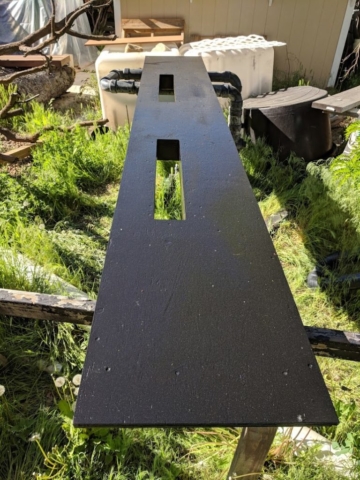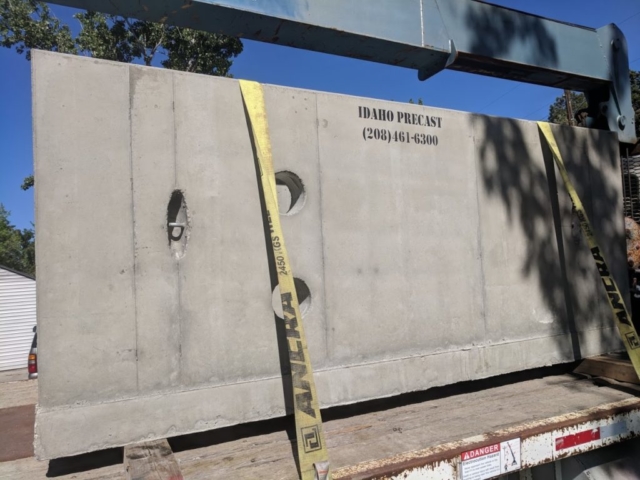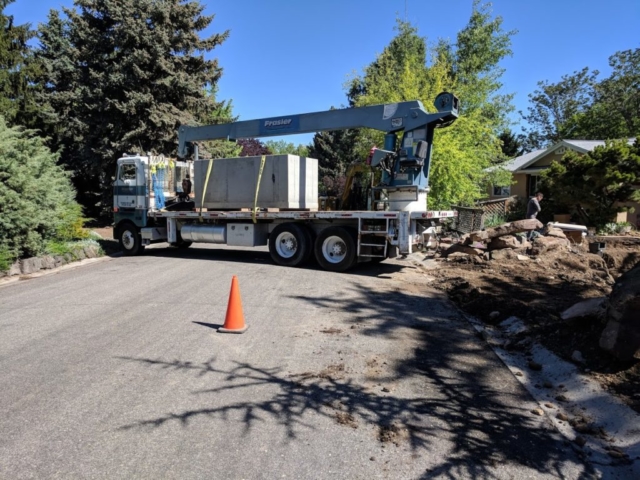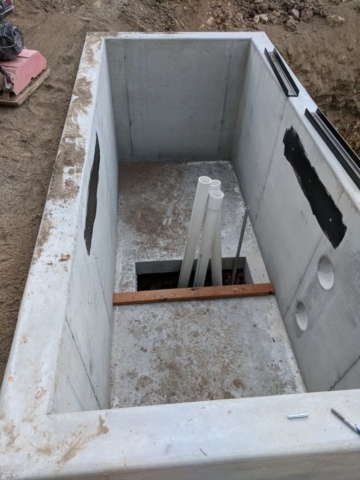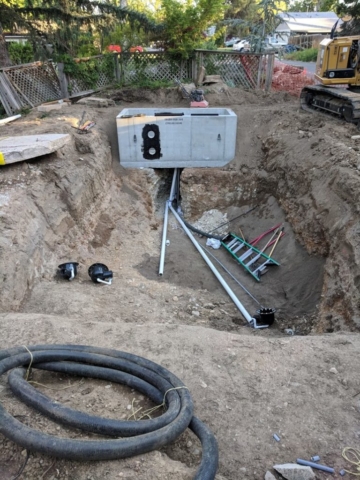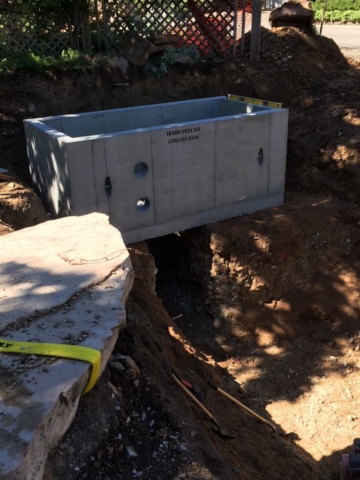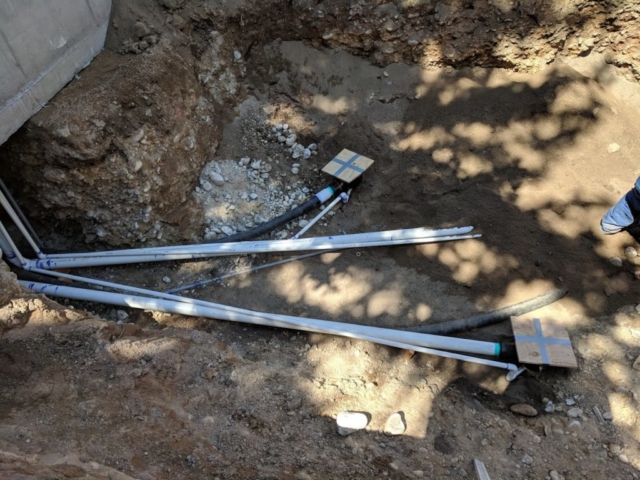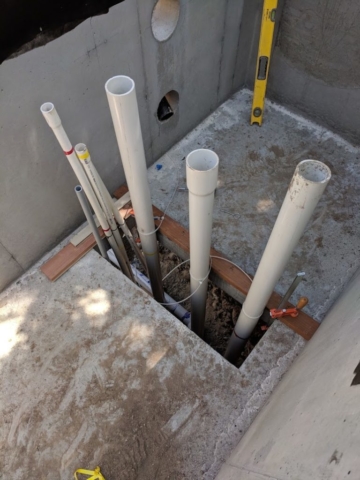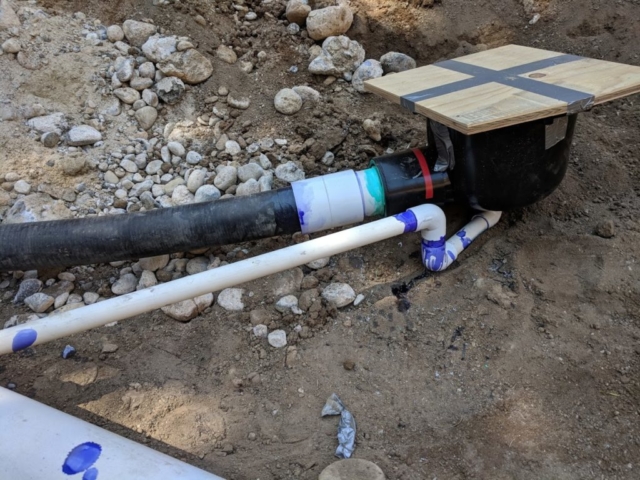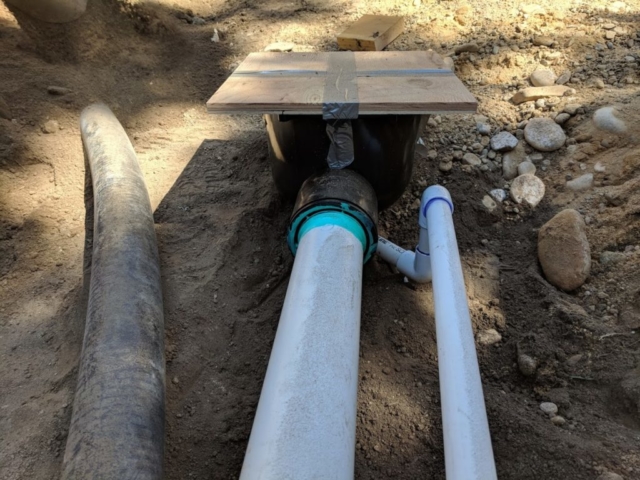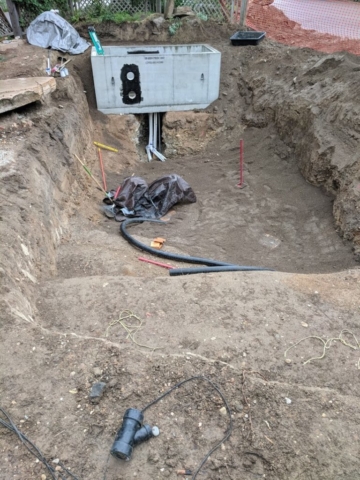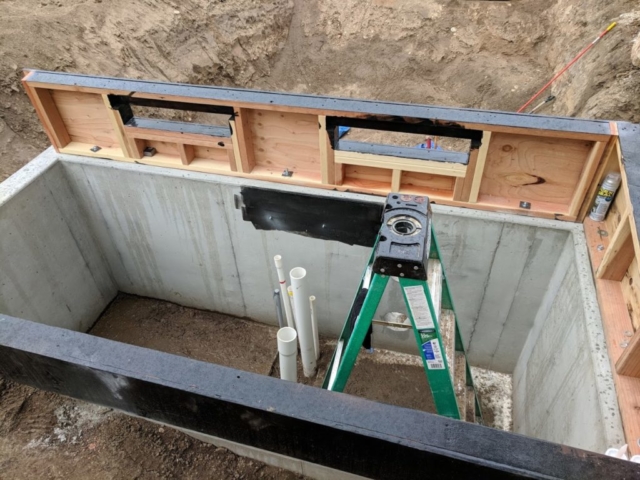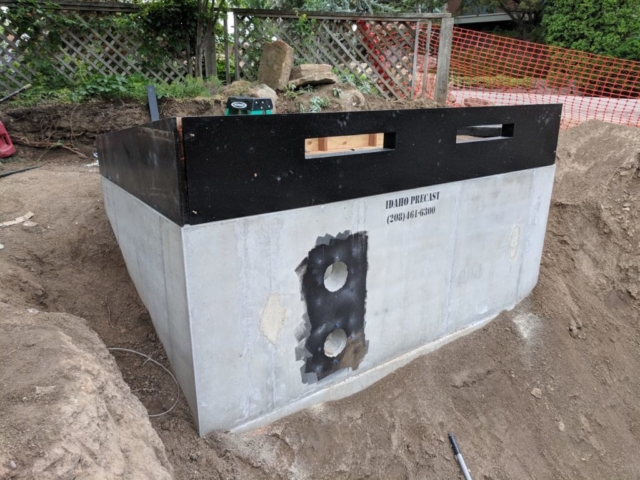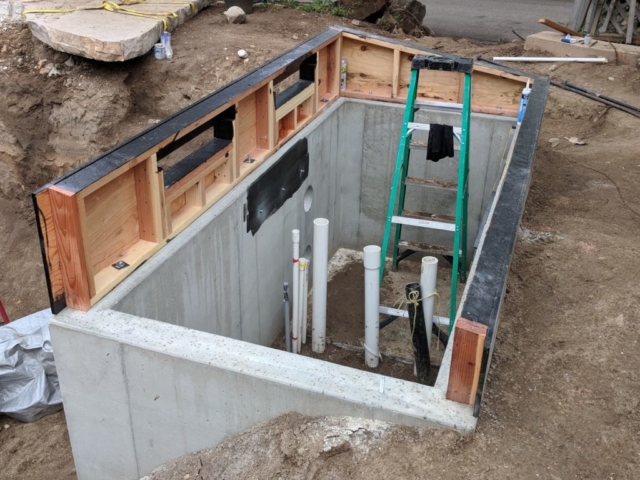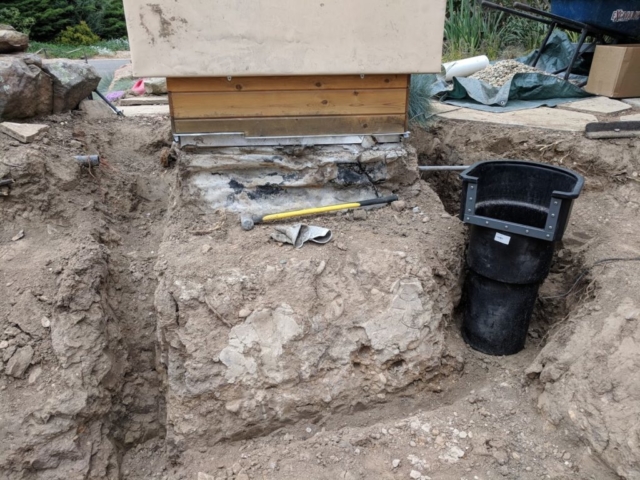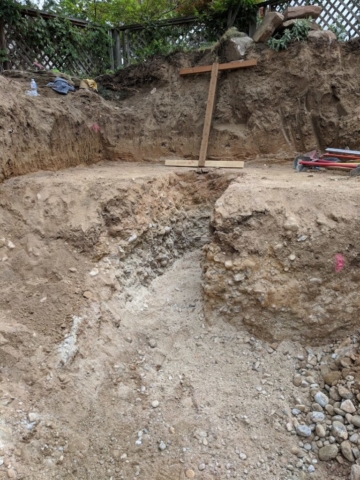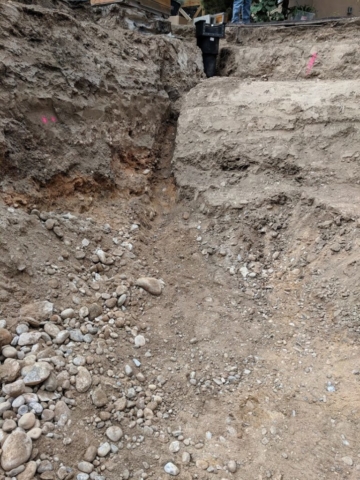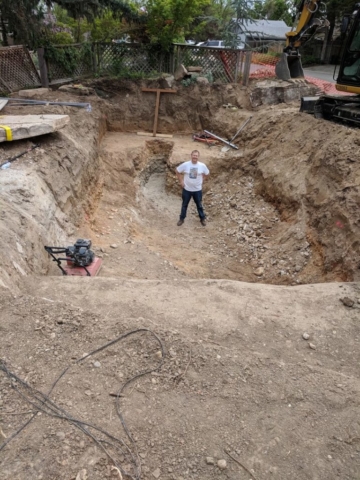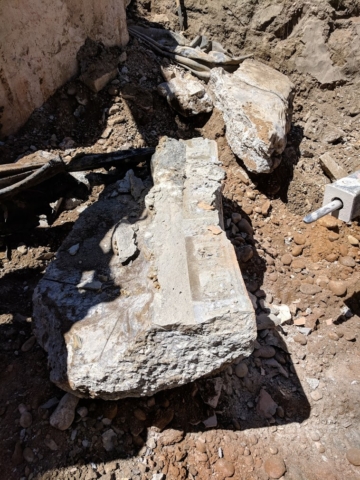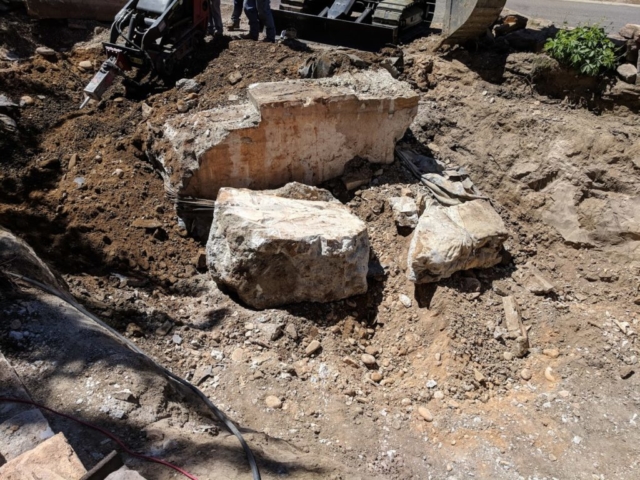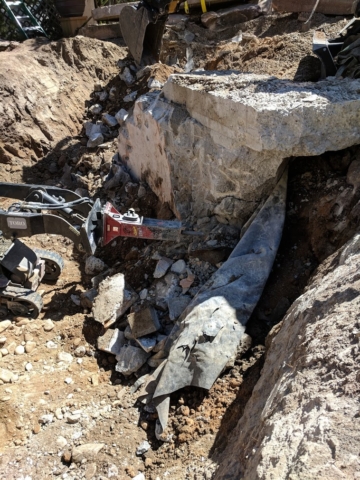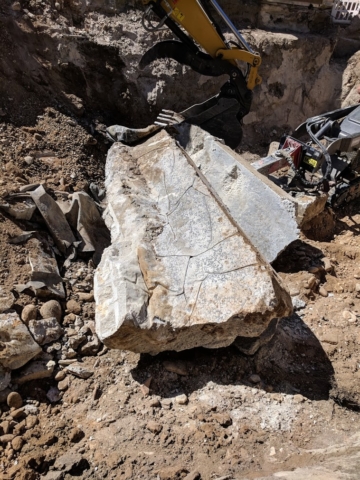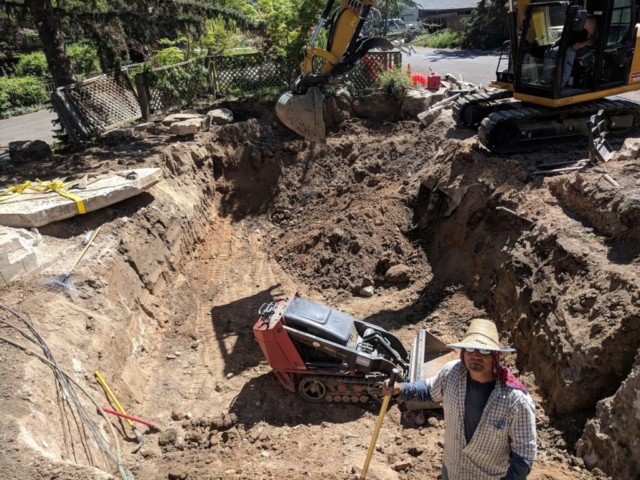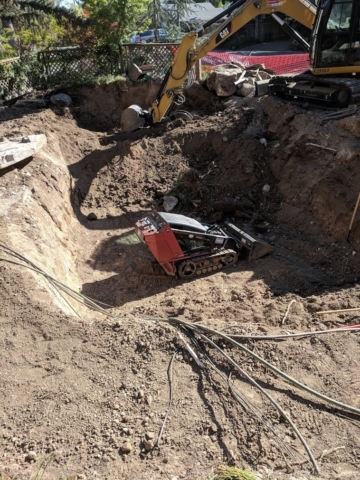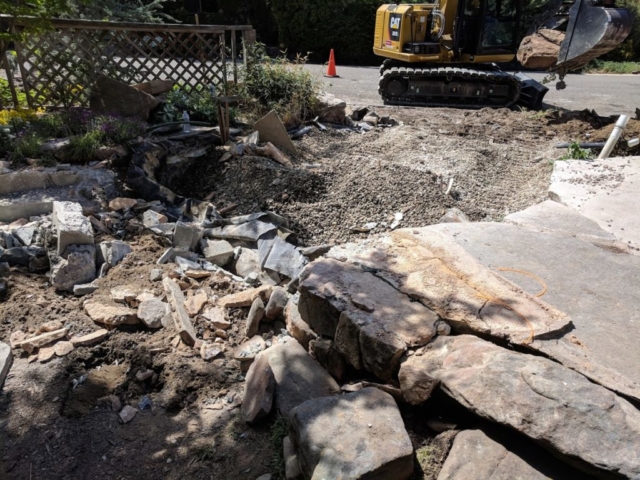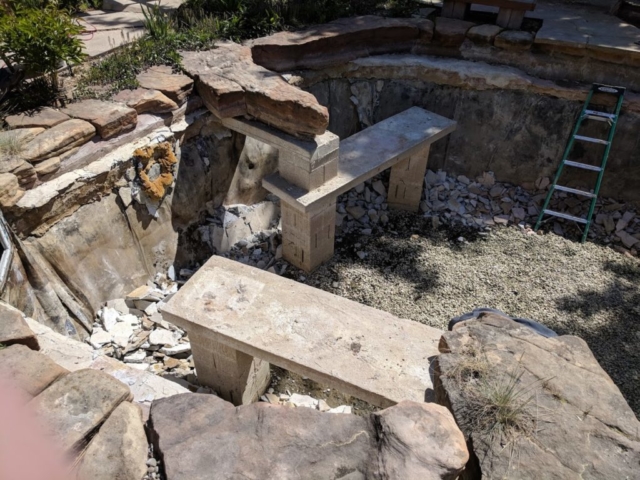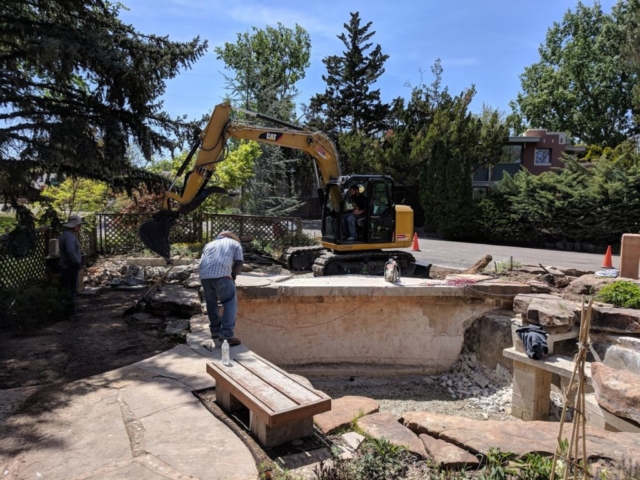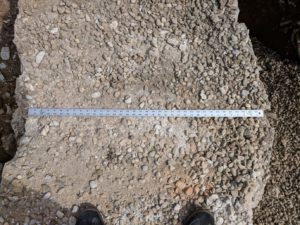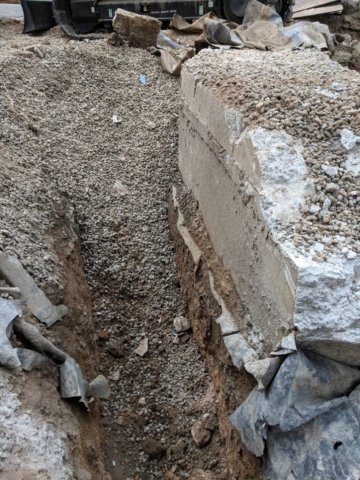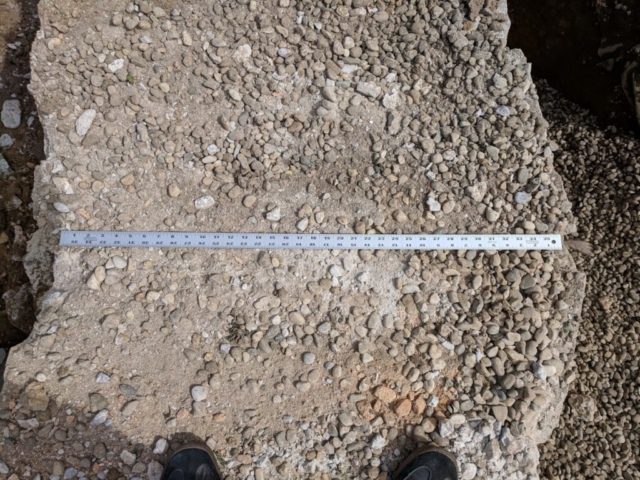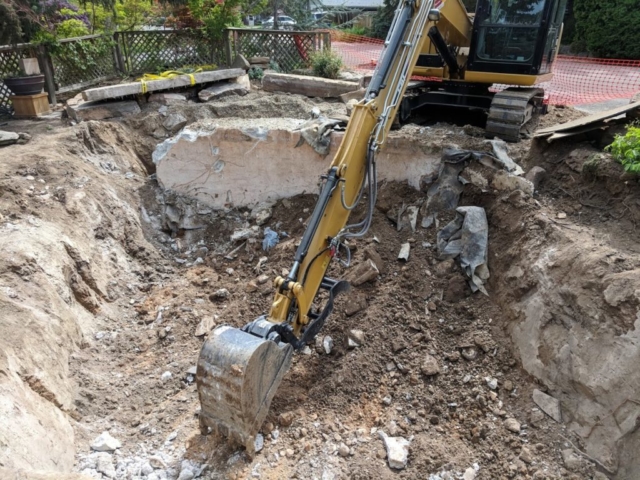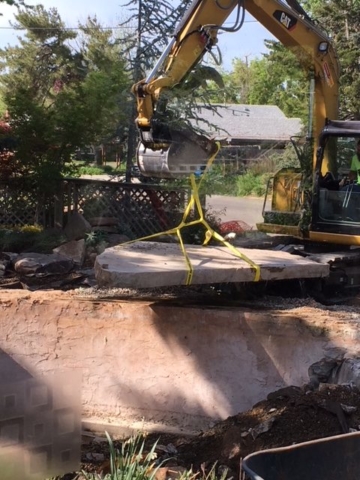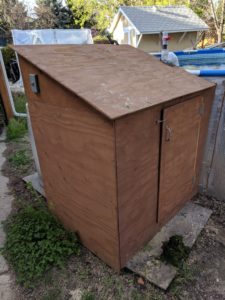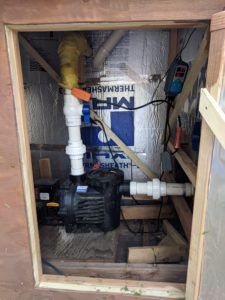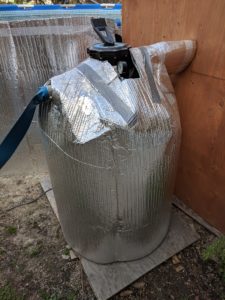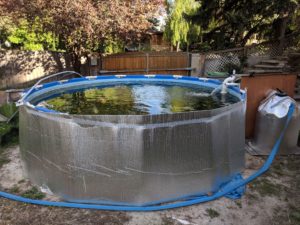The Urban Escapes crew wrapped up most of their work on May 29th. They left with rocks placed and the pond ready to start filling. That week, I sprayed off the liner and any loose dirt I found on the rocks. That Thursday Mother Nature did me a solid and blew in a huge rain and hail storm that cleaned off most of the liner. After the storm, all I had to do was spray out between the boulders and pump out the bottom drains with a trash pump. After that, I sprayed area surrounding the bottom drains and use my wet/dry shop vac to suck the rest of the water out.
I started filling the pond on Sunday. My nephew came over to help and we slowly worked the liner wrinkles up to the outer edges of the pond as it filled. Filling slowly like this allows you to use the weight of water to hold the liner in place. It was a neat trick I learned while watching a video produced by a California company called The Pond Digger. That Sunday, we had the water about 24″ high from the top of the bottom drains. Over the course of last week I continued to fill the pond, plumb the filter outflow, and attach the Helix pond skimmer.
Urban Escapes sent a couple guys back to my house on Friday to help me wrangle the filter into the vault. Rather than keep to the original plan of dropping the filter straight into the vault, I decided to have them help me empty the filter’s media into a water tank for inspection. This spring the filter clogged up and I had to remove the valve assembly and use a heavy wood stick to break the media up. It took a week of back flushing and stick stirring to get the media moving again. I wasn’t 100% sure all the media was free, however, and this was going to be my only chance to check. Fortunately all the media was free flowing and not clumped so we were OK to continue. The disassembled filter was a lot easier to move around so the Urban Escapes crew left, and Molly and I poured the media back into the filter (now in the vault). I spent Friday afternoon plumbing, trying to make as much headway as possible. I ended the day with filter 99% plumbed in but the filter outflow would not line up correctly with the fittings I had. The following morning I made a quick run to the always awesome Grovers and was able to finish plumbing the filter by 9:30 a.m. … just in time for the fish move.


